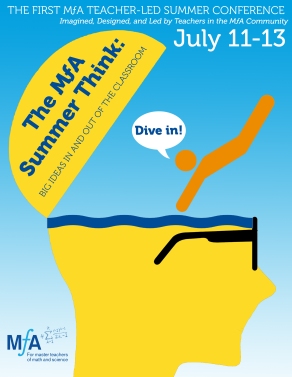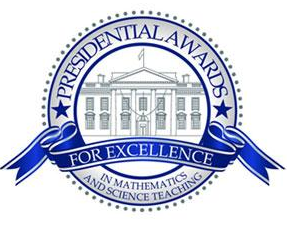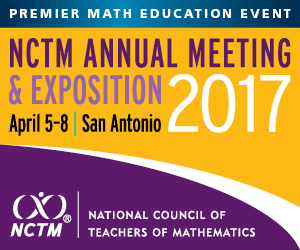Far too often questions on New York State math exams demonstrate a disturbing lack of content knowledge.
Consider this multiple choice item from the June, 2017 Common Core Geometry exam.
Instead of testing a student’s understanding of triangle congruence, this question exposes a serious lack of mathematical understanding among the exam creators.
A superficial reading of the problem suggests that (3) is the correct answer. In (1), the two triangles share only three pairs of congruent angles; in (2), two sides and a non-included angle are congruent in each triangle; and in (4), the triangles share only one pair of congruent sides and one pair of congruent angles. None of these scenarios (AAA, SSA, SA) seems sufficient to guarantee that the triangles are congruent. And in (3), the triangles have one pair of congruent sides and two pairs of congruent angles; this (ASA or SAA) is sufficient to conclude the triangles are congruent, so (3) is apparently the correct answer.
But closer inspection shows that, in fact, (1) and (2) are correct as well.
Consider choice (1). While it’s not exactly clear what it means to map angle A onto angle D, it must require that point A gets mapped to point D. Similarly, point C must be mapped to point F. If a rigid motion maps A to D and C to F, then segment AC must be congruent to segment DF. We now have one pair of congruent sides and three pairs of congruent angles: the triangles are congruent (by ASA or SAA), and choice (1) is a correct answer.
In (2), we are given that segment AC is mapped onto segment DF. This means that point A gets mapped to point D and point C gets mapped to point F. And since segment BC is mapped onto segment EF, we know that B is mapped onto E. Therefore, the vertices of triangle ABC are mapped via rigid motion onto the vertices of triangle DEF. This is sufficient to conclude that the triangles are congruent, and choice (2) is also a correct answer. (It’s also worth noting that, since the triangles are given as acute, SSA is actually sufficient to guarantee that the triangles are congruent. This mathematical error turned up in a separate question on this exam.)
As it stands, the only option that is not a correct answer to this question is (4).
Within a few days, the NYS Education Department issued a directive to count all answers to this question as correct. As is typical, no admission of an error was made: the problem was blamed on discrepancies in wording. Of course, there are no discrepancies in wording here: this problem as written, reviewed, edited, and ultimately published is simply mathematically incorrect. Its existence demonstrates a fundamental misunderstanding of the underlying concepts.
This isn’t the first time an erroneous question has made it onto one of these high-stakes Regents exams. In fact, there were at least three mathematically invalid questions on this exam alone! Over the past five years I’ve documented many others, and each time it happens, it raises serious questions: Questions about the validity of these exams, how they are experienced by students, how they are scored, and the lack of accountability for those in charge.
Related Posts
- Regents Recaps
- Trouble with Dilations (and Logic)
- The Worst Regents Question of All Time
- Another Embarrassingly Bad Math Exam Question
- Regents Recap — June 2016: Algebra is Hard

 I’m excited to be participating in the inaugural Summer Think, a teacher-led summer conference hosted by Math for America.
I’m excited to be participating in the inaugural Summer Think, a teacher-led summer conference hosted by Math for America.
 On Wednesday, February 15th, I’ll be participating in a webinar hosted by the National Science Foundation for teachers who are applying for the Presidential Award for Excellence in Mathematics and Science Teaching (PAEMST).
On Wednesday, February 15th, I’ll be participating in a webinar hosted by the National Science Foundation for teachers who are applying for the Presidential Award for Excellence in Mathematics and Science Teaching (PAEMST). I’m excited to be heading to San Antonio in April for the 2017 NCTM Annual Meeting!
I’m excited to be heading to San Antonio in April for the 2017 NCTM Annual Meeting!